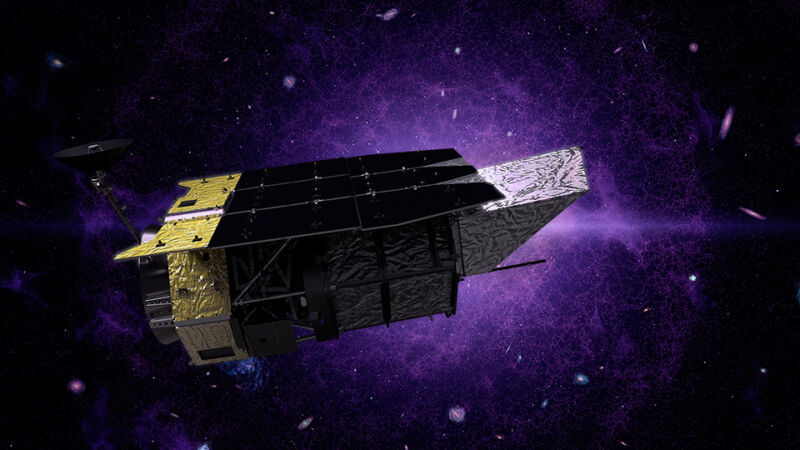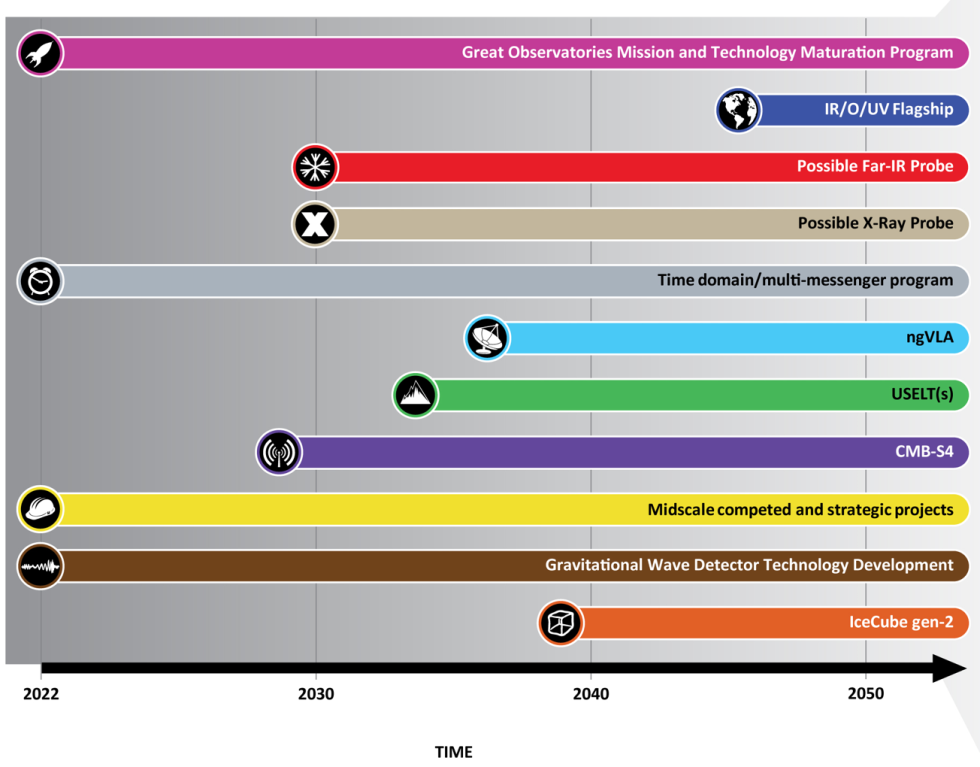On Thursday, the National Academies of Science released the latest Decadal Survey that the astronomy industry uses to help guide funding decisions over the years between the current survey's release and the next one. While the survey doesn't guarantee funding, it's highly influential with NASA and the National Science Foundation (NSF), which fund most of the astronomy research in the US.
The latest iteration lays out a few scientific priorities, including the study of the formation and evolution of galaxies and exosolar systems. And it also suggests which hardware would be required to get the data we need for those studies. In this case, that involves the next of NASA's Great Observatories: a Webb-scale space telescope that is sensitive to wavelengths from UV to infrared.
At the same time, the survey warns that funding for existing activities has become a bit unbalanced and needs to be reprioritized.
What should we be looking at?
There are three areas the Survey says should be major foci for astronomy over the coming ten years. One is the formation and evolution of galaxies. This area will likely benefit from the Webb Space Telescope, which was designed specifically to gather data at wavelengths that will allow it to image some of the Universe's first galaxies. The Roman Space Telescope, set to launch later in the decade, will also provide a valuable survey of galaxies.
Modeling based on the apparent dark matter content of our Universe suggests that these first galaxies formed along a mesh of filaments made by dark matter and then grew through mergers and collisions to become the mature galaxies we see today. During that process, continued large-scale interactions helped produce structures like galaxy clusters. A variety of evidence backs up different aspects of these models; we've clearly observed galaxy collisions and their aftermath, and we may have imaged some dark matter filaments, for example. But there are some key gaps in the early stages of this process, and there are many details to fill in.
The second area of focus differs from those goals, largely in scale. Again, we have a lot of modeling indicating how exosolar systems can form and evolve over time, but we have only sparse data on what these systems and the planets they contain look like at present, in part because the Kepler observatory had equipment failures that kept it from spotting any planets that aren't orbiting relatively close to their host star. There is a lot of astronomy to be done here, too, and again, the Webb and Roman Space Telescopes are sensitive to wavelengths that can help with some of it. But we will also need observations at other wavelengths to understand important factors like fluctuations in the activity of stars other than the Sun.
Perhaps the biggest contribution these telescope will make will be in their study of the atmospheres of exoplanets, providing some indications of their composition, which has the potential to give some indication of whether the planet would be hospitable for life—or whether it shows evidence of presently hosting it. Obviously, that last item will be a key focus of observations.
The final item on the list is what is termed "multi-messenger astronomy." Thanks to the IceCube neutrino observatory and a growing number of gravitational wave detectors, we can now simultaneously observe events using wavelengths of light, changes to the fabric of space, and subatomic particles produced by the event. This technology has the potential to provide a far more complete picture of some of the most energetic events in the Universe, from the deaths of massive stars to the mergers of black holes. This sort of work is just getting started, and there's potential to expand the list of hardware that alerts astronomers about an event or to rapidly respond to these alerts in order to provide observations.
What to build?
The big item on the to-do list is making a large space-based telescope that is sensitive to a very broad range of wavelengths, allowing (among other things) a better characterization of exoplanet atmospheres. "Large" in this case means roughly the size of the Webb Space Telescope, meaning substantially larger than Hubble. The new telescope would be sensitive to a range of wavelengths that largely overlaps the combined range of the Webb and Hubble. It represents a massive project that wouldn't actually be put in space until the 2040s—well after the period covered by this decadal survey.
What the survey suggests instead is that this decade will see a new process for developing large projects like this, called the Great Observatories Mission and Technology Maturation Program. The main goal of this program would be to manage technological risk early in the planning stages, before the project becomes so far along that any problems cause unresolvable complexities. In this case, the Survey recommends that some of the technological problems be handled by intermediate hardware that is useful for observations and for testing new hardware. This project would involve two space-based telescopes, one infrared and one x-ray, launching by the end of the decade.
The authors of the Survey also recommend that NASA implement a category of missions somewhere between its medium-price Explorer missions and large projects like the Great Observatories. Termed "Probe" class missions, this class would nicely cover what is expected to be needed to put these two intermediate observatories into space, and it could provide a model for future Great Observatories development.



3175x175(CURRENT).thumb.jpg.b05acc060982b36f5891ba728e6d953c.jpg)


Recommended Comments
There are no comments to display.
Join the conversation
You can post now and register later. If you have an account, sign in now to post with your account.
Note: Your post will require moderator approval before it will be visible.